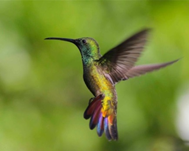Google officially released the Humming bird update almost a year ago on Sep 26, 2013 & we at Position2 had shared our thoughts then. This update was perceived not to be a worrisome algorithm update. But, this can make SEO’s scratch their heads as the approach towards website optimization changes after Humming bird.

It is estimated that Humming bird affected 90% of search queries & made SEO practices more strict & difficult too. With Humming bird – the underlying layers of the search algorithm have undergone a change and are now more in sync with semantics. This stresses the need to move on from a keyword-focus SEO strategy to landing page level, context based approach while optimizing a site for natural search. Content on site should sound like an answer to relevant search query raised by users.
Search crawlers are now capable of identifying & listing technical aspects of a website that co-relate with Search rankings. Most important amongst them are Page load time, 302 re-directs, and keyword stuffed metas. Overall on-page factors will remain the most important aspect to focus on while catering to a post-Humming bird era website.
Although Humming bird may not be as impactful as a Penguin or a Panda; the overall effect lies in the manner in which focus will now shift from keyword-rich content to semantic type of content.
Search engines will evolve to be smart engines
Having said about the implications, let us now look at some best-practices & useful considerations for survival in a post-Humming bird era:
Technical:
Content:
Position2’s PoV:
Our SEO focus has always been on improving the overall health & diagnostics of the site as part of optimization & also delivering the best user-experience on the website. Our thorough audits evaluates close to 40 technical parameters crucial for SEO. In addition, we also provide QC checklists & guidelines for enhancing website architecture.
In addition to the technical aspect, our detailed, well-researched content calendars are in place catering to primary & long-tail keywords to ensure that there are regular content refreshes happening on the site. We also stress on having an optimized presence on social media to boost organic search presence.
As Google has aptly named this algorithm to be “precise and fast” like the Humming bird itself, expectations are that sites need to perform to answer precise search queries & of course need to fast!
Put in your comments and share your thoughts on the Humming Bird experience and how it changed the way you approached SEO.
Contributed by Chetan Rajasekaraiah, Senior SEO Specialist, SEO Team